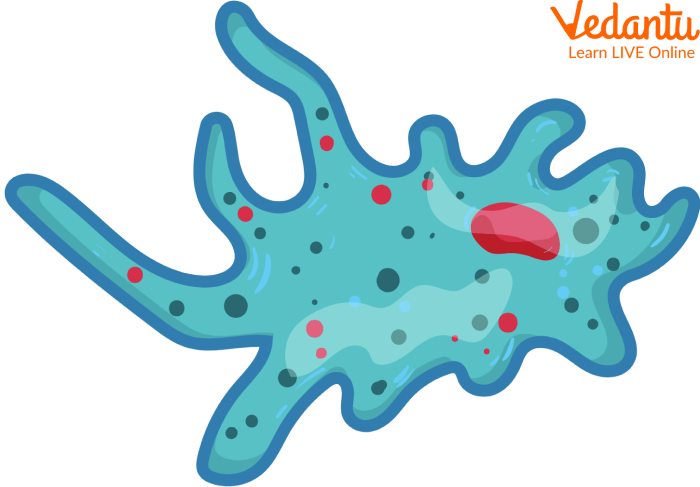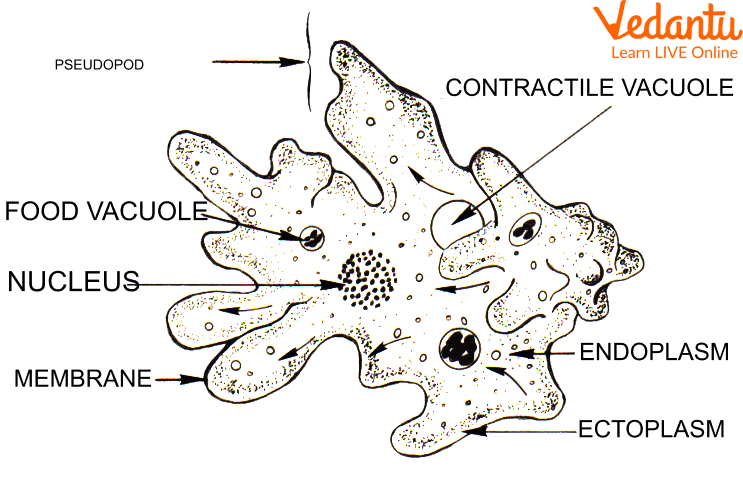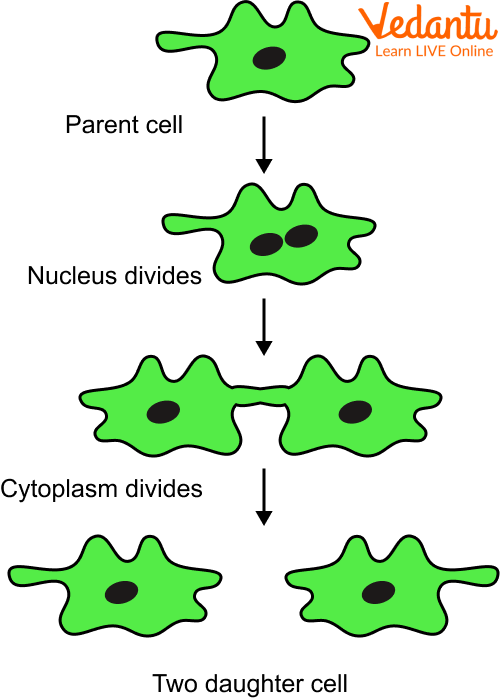




An Introduction to Amoeba
Amoeba are the simplest form of life and are found in oceans, streams, lakes, ponds, and wet soil. The word amoeba is derived from the Greek word amoibe which means change. Amoeba live in a changing environment where they must adapt to survive. Amoeba are single-celled organisms that can reproduce by simple division. This means that, instead of replicating in the same manner as more complex cells, amoeba reproduces by splitting into two that duplicate all of the original cell's genetic info. In this article, you will learn about the amoeba structure and function, as well as amoeba features. And in the end, we will learn about some facts about amoeba.

Amoeba
What is Amoeba?
Amoeba is a single-celled organism with the ability to change shape. They are typically found in bodies of water such as ponds, lakes, and slow-moving rivers. These unicellular organisms can sometimes make their way inside the human body and cause a variety of ailments. One of the first reports mentioning amoebas dates back to the 18th century. In 1755, a German naturalist called August Johann Rosel von Rosenhof discovered an amoeba.
Amoeba Structure and Function
Amoeba is a shapeless and colourless single-celled microorganism. It has a jelly-like structure, and it changes its shape. Its body is asymmetrical in shape. Its size is very small and can only be seen under the microscope. Its size ranges from
If you closely look at the amoeba structure, you will see finger-like projections called pseudopods (pseudopodia), which help in the movement and as well as in intake of food. The pseudopods are the extensions of the cytoplasm.
Amoeba also contains other cell organelles such as mitochondria, Golgi apparatus, and fat globules.
Below is a labelled amoeba diagram:

Parts of Amoeba
Parts of Amoeba
The cell of amoeba consists of the following parts:
Cell Membrane: This is n layer of protein and fat that surrounds the amoeba. It allows the flow of substances in and out of the cell.
Nucleus: It is the brain of the Amoeba. It contains genetic material for its growth and manages Amoeba's whole functioning.
Vacuoles: These are air sacs in the cytoplasm of Amoeba. There are three types of vacuole in Amoeba, each carrying out different functions.
i. Contractile Vacuole: Contractile (they can contract and expand) vacuoles regulate the osmotic pressure by pumping water out of the cell through a process called osmoregulation.
ii. Food Vacuole: These are non-contractile (fixed shape) and are in different sizes. These contain food ingested by the Amoeba.
iii. Water Globules: These are small, colourless, noncontractile spherical filled with water.
Cytoplasm: This is a gel-like material that contains all the organelles of the Amoeba.
Pseudopods: These are finger-like projections that help the Amoeba move about and grab hold of food particles.
Interesting Facts About Amoeba
Amoeba is a fascinating organism. Let us have a look at some of the interesting facts about Amoeba.
Amoeba belongs to the genus Protozoa, which are unicellular eukaryotes with membrane-bound cell organelles.
Augustus Johann Rosel von Rosenhof first discovered it in 1757.
The process of breathing in amoeba is done through the cell membrane.
Amoeba consumes food through the process of phagocytosis.
The process of excretion and removal of waste is done through the contractile vacuole.
Amoebas reproduce by dividing into two cells, and they can also form cysts when conditions are unfavourable.

Reproduction in Amoeba
Some amoebas are parasitic, thereby causing harm to humans and animals. For example, Entamoeba histolytica causes amoebiasis.
Amoeba turns into a rigid ball called an Amoebic cyst in unfavourable weather conditions.
Amoebas reproduce asexually either by mitosis or cytokinesis.
Amoebas are found in terrestrial as well as aquatic habitats.
Amoeba usually eats other bacteria and microbes.
Digestion in amoeba takes place within the cell itself.
Summary
Amoebas are single-celled organisms that are found in all types of environments. They are able to move and change shape, and they feed on other small organisms. It is classified as a protozoan and can be found in nearly all environments on Earth. The amoeba has a variety of different shapes and sizes, and its internal structure includes several organelles that help it to function properly. Although they are very simple creatures, amoebas play an important role in the food chain and perform many vital functions in the ecosystem.
FAQs on Amoeba
1. How is Amoeba useful to humans?
Amoebas play many important roles for us. Because of their simple structure, they are extensively used in lab genetic studies. Amoebas are everywhere, from our bodies to the ocean beds. They are responsible for recycling nutrients in the soil. They prey on harmful bacteria and protect soil nutrition. Thus, they help maintain ecological balance. They can also be attacked by other parasites like viruses, hence they are used in the study of developing antiviral drugs in laboratories.
2. How does Amoeba reproduce?
Amoebas can divide into two and clone themselves to reproduce every two days through the asexual way of reproduction. Every two days, the DNA and cellular material are doubled, and the amoeba reproduces by creating a clone. Each clone receives the identical DNA material necessary for it to stand and reproduce identically two days further hence. The DNA material doubles and affixes to the amoeba's membrane. The membrane then splits apart by erecting a wall around half of the double DNA, replicating itself in the process.
3. What is the size of an amoeba?
The amoeba size tends to vary greatly; from 2.3 micrometres to up to 2,00,000 micrometres. The marine amoeboid Massisteria voersi size happens to be just 2.3 to 3 micrometres in diameter. On the other extremity lies the shells of deep-sea xenophyophores whose size can go up to 20 cm in diameter.
4. What is the Colour of amoeba?
Due to phytochromes, Amoeba may appear in a variety of colours (often yellow, green, and purple) under a microscope.









